I discovered that I was BRCA1+ in November 2017 shortly before my 29th birthday. I have a strong maternal family history of breast cancer including my mother, my aunt twice, and great aunts. My mother was diagnosed with breast cancer when I was in elementary school in the late 1990s, completed genetic testing, and discovered that she was BRCA1+. Many years later when I was in graduate school, my mom told me and my siblings about her genetic status and encouraged us to get tested when we were ready.
I sat with this information for several years before finally making a genetic counseling appointment in fall 2017. I went into testing assuming that I would be positive for the mutation and would be pleasantly surprised if it was negative, figuring that would be the easiest way to cope with either outcome. Intuitively, I knew I was BRCA1+, so when I got the positive result it validated what I already intrinsically knew. After two years of breast MRIs and mammograms, I decided to have my prophylactic bilateral mastectomy in January 2020, a couple days after my 31st birthday and a phenomenal bye bye boobies birthday party with family and friends. I was so confident in my decision to have a preventative mastectomy. I was determined to reframe this huge surgery into a celebration of life and taking control of my future. I had done a ton of research, talked to many other women about their mastectomies, and knew all the lingo and questions to ask my very capable surgeons. My breast and plastic surgeons agreed that as a young healthy woman that I would have a very positive outcome. My breast surgeon said that she was excited for my mastectomy and reconstruction because she believed that I would have aesthetically good results. I never for a second thought that things might not go to plan.
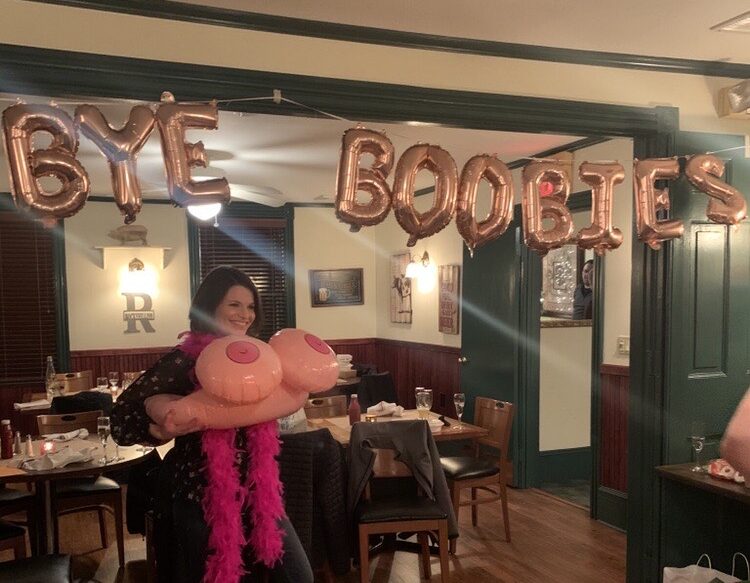
I had my nipple-sparing mastectomy with placement of over-the-muscle tissue expanders on January 6th, 2020. After surgery, there were issues with blood flow to my nipples, especially my left nipple, that my surgeons monitored closely. My breast surgeon enthusiastically told me that the nipples want to live and would likely survive. I believed that my nipples were resilient and would heal, but after three weeks with minimal progress despite use of various creams to promote healing and stimulate blood flow, my left nipple and surrounding skin continued to get darker and darker as did a small part of my right nipple. I remember sitting in my plastic surgeon’s office on a Thursday afternoon, thrilled to finally have my last 2 drains out after 2.5 weeks, when he told me that he would remove the necrotic tissue on my left breast, including my entire left nipple and part of my right nipple. In that moment, I went into a full comedy routine a la Marvelous Mrs. Maisel which had the whole plastics team laughing. The moment that the plastics team stepped out of the room, I immediately started crying. How could this be happening? I’m young, healthy, and was going to have a great aesthetic outcome and now I’m losing a nipple. It wasn’t supposed to happen this way but I continued to smile, make the best of it, to crack jokes and remain optimistic. The necrotic tissue was removed the following Tuesday when I bid farewell to my left nipple and part of my right nipple.
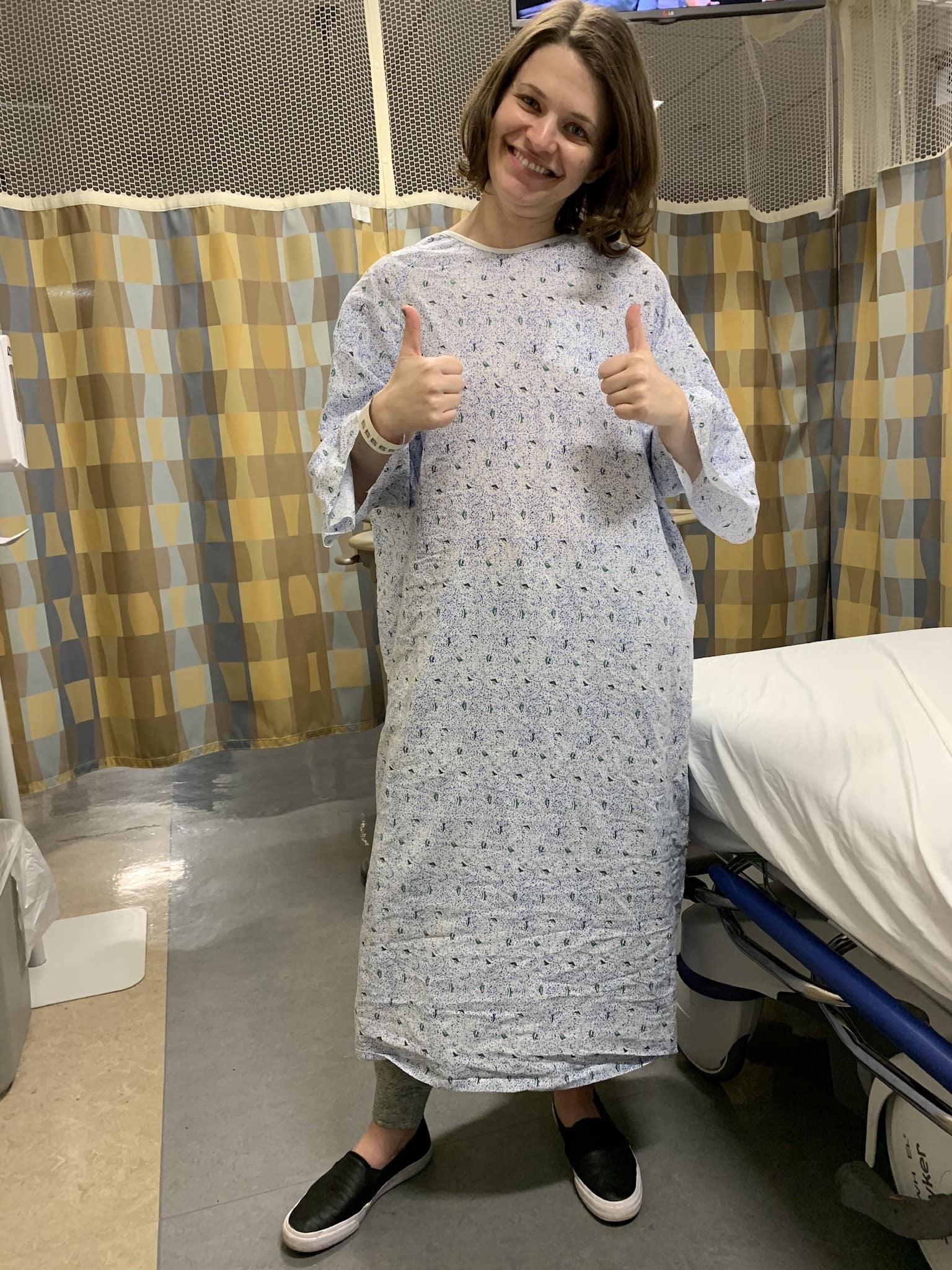
I chose to focus on the funnier moments to balance out the moments of medical trauma, like when the water stopped in the middle of my pre-op Hibiclens shower the night before my revision surgery so I stood wet with my breasts wrapped in a black garbage bag calling friends that lived nearby to see if I could finish my shower at their house. I had a wound vac for a week after this revision surgery which I joked made me feel like a cow constantly being milked. I decorated my wound vac to look like it had a face and pretended that it was a walkie-talkie. I chuckled as I would stuff my bra like a middle school girl before I went out to make my chest look a bit more normal. These moments of levity brought lightness to a very challenging situation that I had little control over.
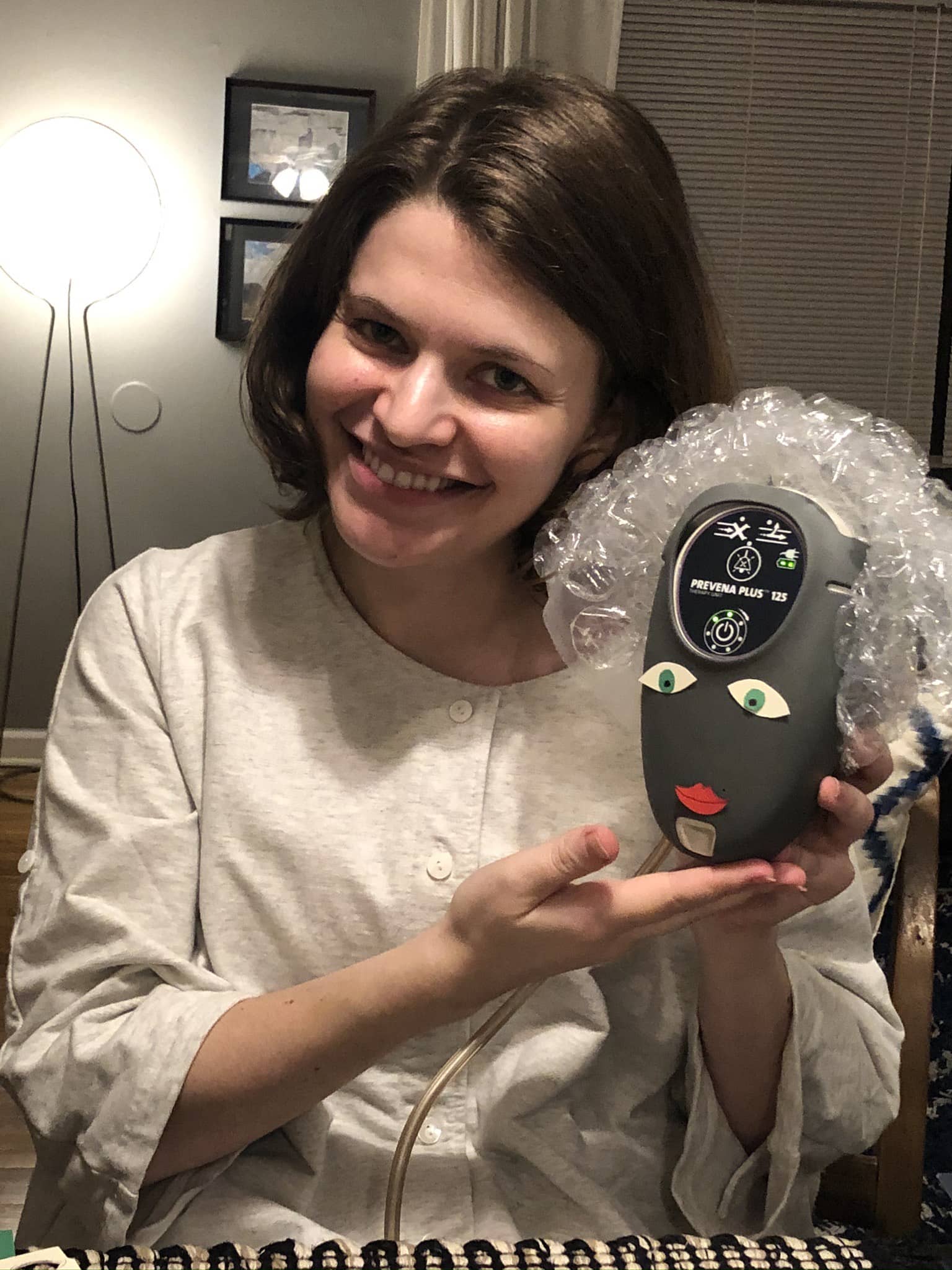
Once the wound vac and drains were removed, I was left with a giant three-pronged scar on my left breast and a smaller version on my right breast. While it was nice to see my body without any dying tissue, I felt deformed and disfigured. I thought I was in the clear until the centers of both wounds didn’t heal resulting in multiple in-office visits getting new stitches and the sudden development of a seroma which lead to a hospital visit for ultrasound-guided drainage. It was then that staying positive and making jokes to stay afloat didn’t feel like enough anymore. Smiling became draining, laughing felt dimensionless and exhausting, and staying optimistic was getting harder. I grieved the loss of my breasts as I knew them and the unexpected loss of my nipple. I struggled with temporarily being completely flat. This process was changing me both physically and emotionally in ways I didn’t anticipate. I leaned on friends, family, and started therapy for additional support.
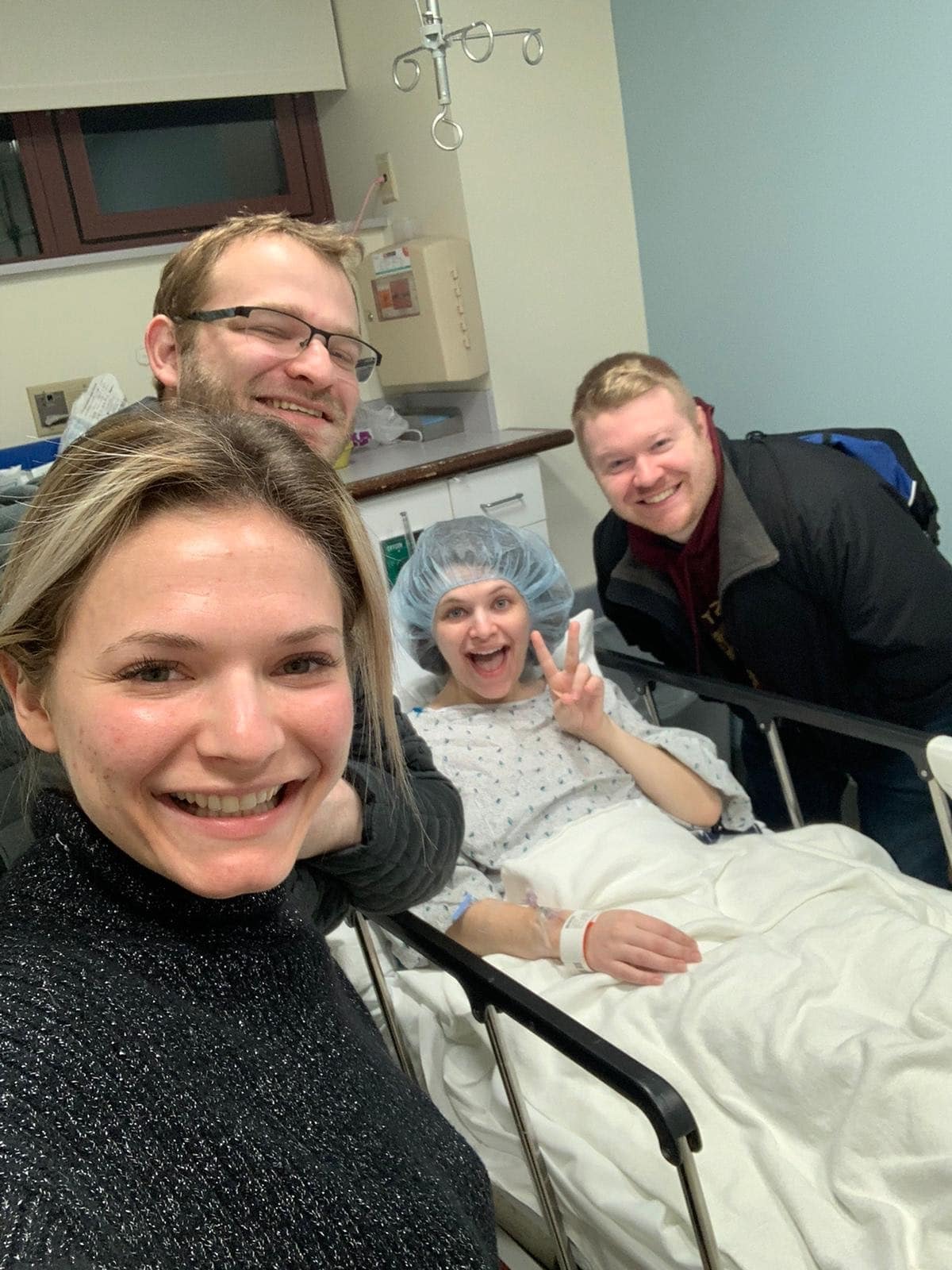
After a few dark weeks, my healing started to turn around. Both breast wounds closed and the serous fluid reabsorbed into my body. I was cleared to drive after over two months and regained a bit more independence. It felt amazing to see my body rebuild from the trauma it had been through. I finally started having expander fills slowly but surely and felt more like myself everyday as the intense anxiety over what complication might be coming next began to subside as my body continued to transform and heal.
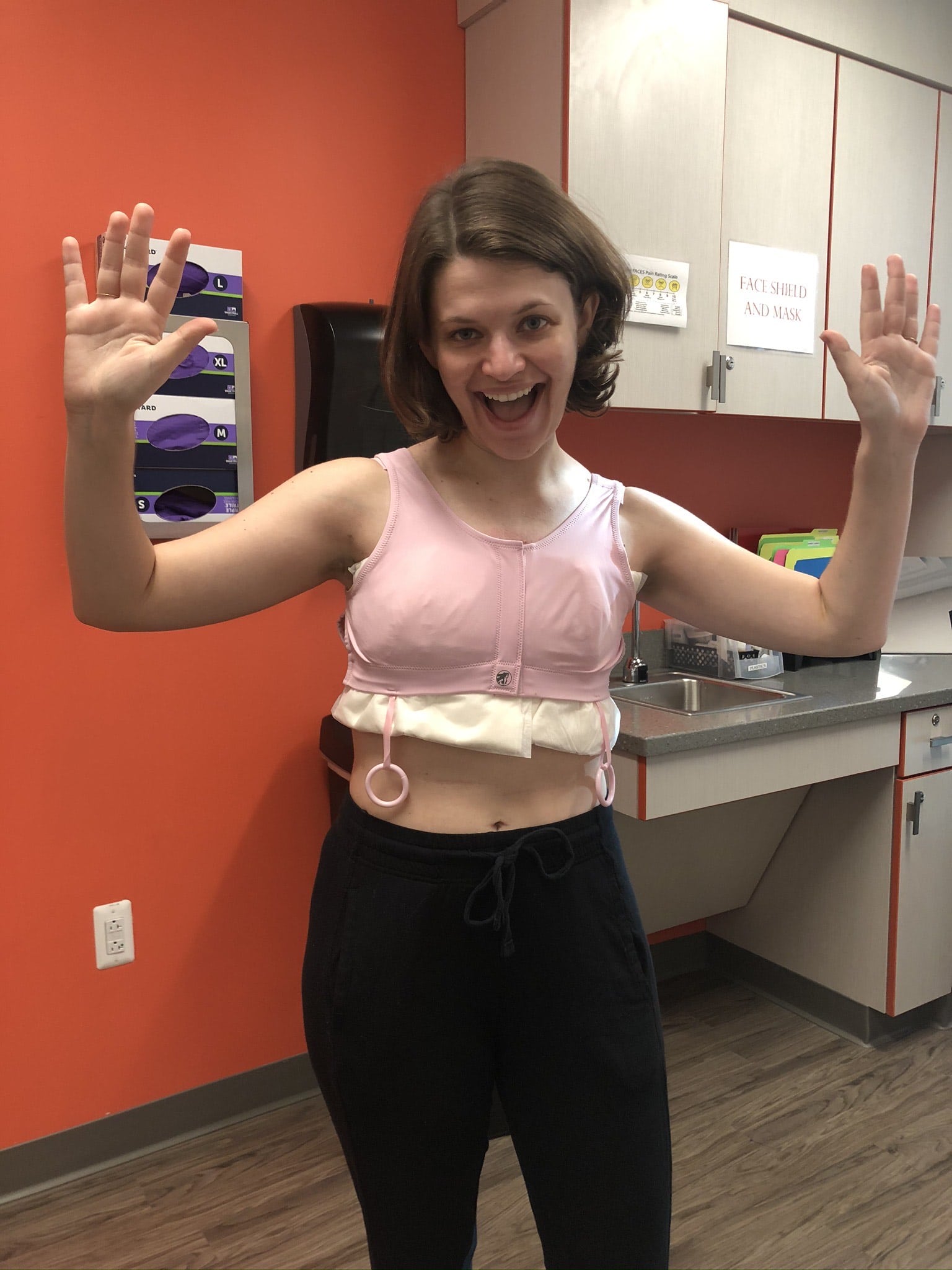
Through my mastectomy, I learned that positivity isn’t about perfection. Positivity is about having restorative practices like finding humor in stressful moments, getting help from others, maintaining optimism when things don’t go as planned, and focusing on what we do have control over when life feels overwhelming and chaotic. Remaining positive isn’t all sunshine and rainbows, it’s about finding the break in the clouds where the sunlight is trickling though that reminds us that the storm will come to an end.
By Sabrina Starkman
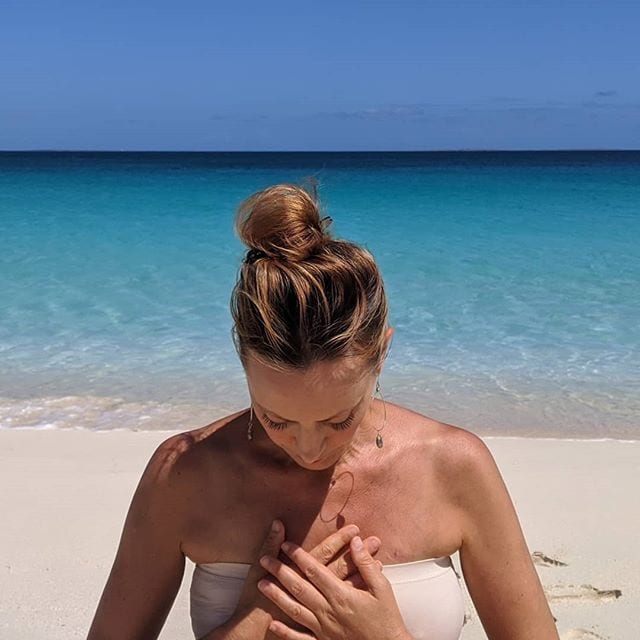
In 2010 I was diagnosed with Hodgkin’s Lymphoma and then breast cancer in 2011. I went through chemotherapy and multiple surgeries, as well as holistic and integrative treatments. The lymphoma quickly healed, but breast cancer continued to haunt me. I experienced several recurrences which resulted in excessive surgeries, treatments and cosmetic procedures.
I was a self-proclaimed vanity queen before cancer. I wouldn’t dare leave the house without makeup and I loved to dress provocatively. Turning heads fueled me. After cancer I was desperate to have some semblance of the body I once had, the one that turned heads and made me feel desirable. But every surgery led to more complications and a more mutilated appearance. Eventually, I decided to have my breast implants removed and opt for a fat grafting cosmetic procedure. I had the good sense to remove the foreign objects that I believed were causing complications, but again I was so desperate for an acceptable physique that I was willing to go under the knife once more for what I thought was a healthier option.
Removing my implants was a very difficult decision, but one that I felt was necessary. I was supposed to have multiple fat grafting procedures but after the second one, the unthinkable happened. I had complications and another cancer recurrence. This brought new meaning to the term ‘drop dead gorgeous’. Up to that point I was so desperate for a beautiful body at any cost, but finally I came to the conclusion my vanity might end up killing me.
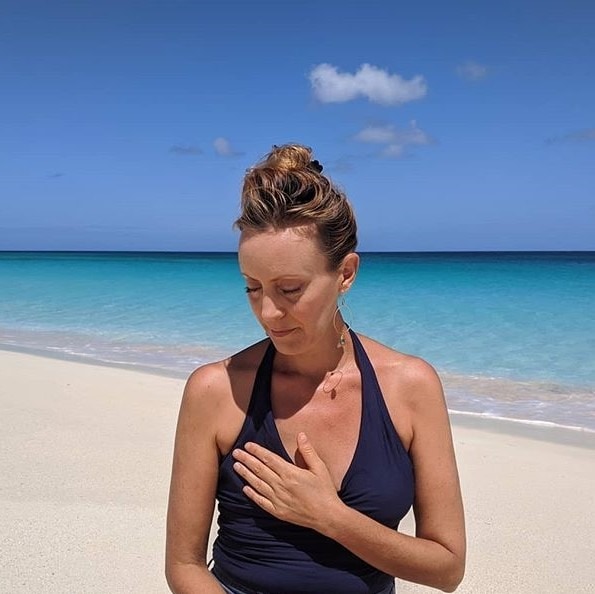
Until this turning point I had been primarily focused on the aesthetics of my physical self and I wasn’t giving my precious body the time and space to heal. In addition, I wasn’t considering the mental and emotional toll it was taking. When I had the recurrence after the fat grafting procedure, I became depressed because not only did my body look worse than ever, but I was fighting for my life once more. I started to give up hope that I would ever fully heal or ever feel comfortable in my body again.
It quickly became evident that I needed to redirect my focus from wanting a sexy body to fully healing my body and accepting it for the miraculous machine that it is. In addition to healing on a physical level I made a commitment to heal myself emotionally so that I could finally live a fulfilling life of self-worth and self-love. I started looking into natural methods to support my process, which included deep inner work and meditation. This opened the door to emotional and spiritual healing. From that moment I set out on a soul searching journey. Deep down I knew that my breasts (or lack thereof) didn’t define me, but when I looked in the mirror, I felt like less than a woman. I longed for the body I once knew, the one that got attention. And so, the grieving process began.
Mourning who I used to be was so important. I needed to grieve the person I once was to accept the person I now saw. I experienced all of the emotions: anger, sorrow, depression, resentment, shame and I allowed myself to mourn. I knew that if I wanted move forward and find happiness and fulfillment, I would need to find a way to accept my new body.
Day by day I dug a little deeper, practicing self-love and acceptance. I spent a lot of time alone, caring for myself and really getting to know who I truly am. I took time to disconnect from the outer world to go inward. I adopted intimate self-care rituals to get reacquainted with my body. It wasn’t easy but I was committed. In my quest to accept this new body, I began realizing that there is so much more to me than I ever knew. I learned that my body is just my vehicle in this life, but my soul is the driver. My body is the physical part of me that I need to take care of so I can enjoy all that life has to offer, but the mental, emotional and spiritual aspects are the driving forces of my well-being. I soon acknowledged that those aspects of my health had been sadly overlooked.
As I continued soul searching, I concluded that there is much more to me than meets the eye and the real me is something greater than I ever could have imagined. The more I did this inner work and connected with my true essence, the more I realized that the way I look on the surface does not matter in the big picture. I didn’t need anything outside of me to make me feel worthy or valued. It was always within me. I decided to redefine sexy on my own terms. To me, sexy means being empowered, confident and desirable. I proudly declared that I am all of these things down to my soul. I am eternally sexy. This led me to fully accept and unconditionally love all parts of me. Cancer unexpectedly guided me through this awakening and made me into the best version of myself. I never really loved and appreciated myself before cancer and I can say wholeheartedly that I do now. The search for my true sexiness cracked me wide open to reveal my soul, the non-material essence of who I truly am. This is what really matters. This is what is sexy.
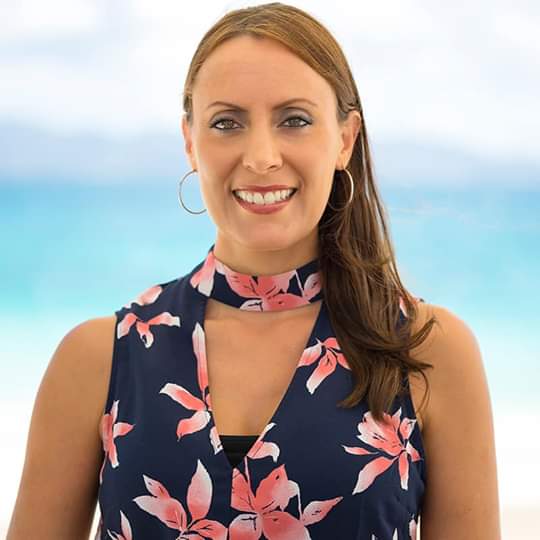
From this powerful awakening, Sexy Soul Search was born, a spiritual journey of self-discovery. It is my honor and privilege to share this process with my fellow thrivers. To help them discover that they are so much more than their body. That their true sexiness radiates from their soul.
By Cat Phillips
@sexysoulsearch
It was my first emergency room visit just weeks after a double mastectomy direct-to-implant, when I realized that my intuition would be the very thing that saved my life. Angry that I was even in this position to begin with, I was especially irritated by the fact that I had to repeat myself eight times for the eight interns that visited, and all asked the stock questions.
I am an anomaly. I do not fall in line with the classic statistics or symptoms as a patient. Sitting in front of these strangers proved that point over and over. “No, I don’t get fevers when I’m sick or have an infection…ever,” I repeated. Still pretty fresh from surgery with nerve damage, I had very little feeling in my chest, especially at the incision site which now resembled more of a transition to becoming a zombie than a woman trying to save herself from the effects of a BRCA1 mutation. Because of that, pain was a non-issue.
After sitting in the ER for four hours, retelling my case to eight interns, and never receiving the consult with a plastic surgeon I requested, I had the gut feeling I was in for a long haul. My plastic surgeon was out of town at a conference, and it turns out, he was at the same conference as the plastic surgeon from this hospital. There was no qualified provider left as my back-up in case of emergency…the very emergency I was living. So, I was discharged with the wrong antibiotic because no tests were run, no cultures were taken, and no blood was drawn. And heck, I didn’t have a fever, so there was that. That visit would set the tone for what was about to unravel over the next several months.
A week passed and my surgeon was still MIA, so I visited my PCP concerned that I was literally coming apart at the seams. Again, not seeming too concerned, because after all, I had no fever, nausea or vomiting, the PA decided to swab some samples after my continued prompting, even though she really was not concerned. Four days later, my intuition proved right – I had an infection. Even more so, the antibiotic from the ER was not the right one to fight it because it was discovered that I had Pseudomonas, an antibiotic-resistant bacterium that I contracted from unsterile conditions in the hospital. It literally said that in my chart.
Imagine if my PA had not done the necessary swab? That kind of bacteria is the very kind that kills people. I followed the protocol religiously, and yet, the appearance of my breast was not improving. Rather than call my surgeon who was now back in town, my husband was adamant that we show up when his office opened first-thing in the morning, and demand to be seen. So, we did just that. My husband drove us 1.5 hours and we were first in line. Even after explaining what had transpired the weeks prior, my surgeon brushed me off, asking how I could be confident something was wrong. “Look for yourself.” And he did, with mouth wide open. No words, he feverishly took multiple samples and promptly inserted me in his surgical schedule the next day for implant removal, debriding of the wound, and new implants. My intuition had served me well once again.
The surgery went well, and my highly-regarded, award-winning surgeon did not feel I needed to be placed on antibiotics since I just finished a round for my Pseudomonas diagnosis. So, I was sent on my merry way. Again, the story replayed itself. My surgeon was out of town, no back-up provider to contact, and my incision was now becoming a hole in the side of my breast. No fever. No nausea. No vomiting. But I knew things weren’t right when I looked in that hole and saw black material. Multiple calls to the office nurse who then made multiple unanswered calls to surgeon. Calls to new plastic surgeons in the health system, calendars cleared, and another emergency surgery was in store for me. Turned out the Pseudomonas had never cleared the first time and was setting up camp in my chest cavity.
My health journey did not end after that implant removal and replacement. Today, after seven total surgeries on my chest, I am left with deformed and scarred breast tissue. Open wounds unhealed after implant removals left my new surgeon no choice but to close my chest with whatever was left. What began as an informed and highly researched decision to have BRCA1 surgery to help beat my odds of dying from cancer, nearly killed me because of poor care. It was my intuition and advocating for my health and my life that saved me.
So many women are raised to listen, be “good” and follow directions. Somewhere along the lines, many of these very women lose their voice. For some, that can be in their relationships, in their jobs, or in their journey to health and wellness. I am thankful that I was raised differently. Coming from a line of women with auto-immune diseases, and a long lineage of cancer survivors and those who have lost their battle with cancer, I learned very quickly that I must advocate for myself, or no one will. I took note early on that as women, we have the gift of intuition. We are connected to our bodies in a unique and sometimes mysterious way, that provides an insight unexplained by science and medicine.
I did all the right things before my BRCA1 surgery. I researched. I spoke with several physicians and surgeons. I consulted genetics counselors and leaned on friends who had undergone the same surgery. I chose and trusted a highly credentialed and highly regarded surgeon. In the end, none of that mattered. Not one ounce of that pre-surgery work is what saved my life. My voice, my trust in myself and my intuition saved my life. My need to be heard was far more vital to my well-being than my need to be seen as a compliant or “good” patient.
The greatest lesson learned from this continued journey to health? Women must serve as their own advocate. We must speak up for ourselves and not be easily disregarded by providers who think their credentials mean they are free from error. We must continue to be our biggest proponent, unwilling to be silenced when we know in our gut that something is wrong. We must remember that intuition is our greatest superpower.
About the author
Amy Neuman Proffitt is a proud wife, mother and stepmother to six, marketing professional, blogger, motivational speaker and BRCA1 previvor. She continues to share her knowledge and experience of her health journey to help other women feel empowered to own their health and wellness and become the best version of themselves. Amy created The HERo, a community of confident and empowered females who are their own HERo. This community continues to grow through in-person events and training for women of all ages, and online through social media platforms.
